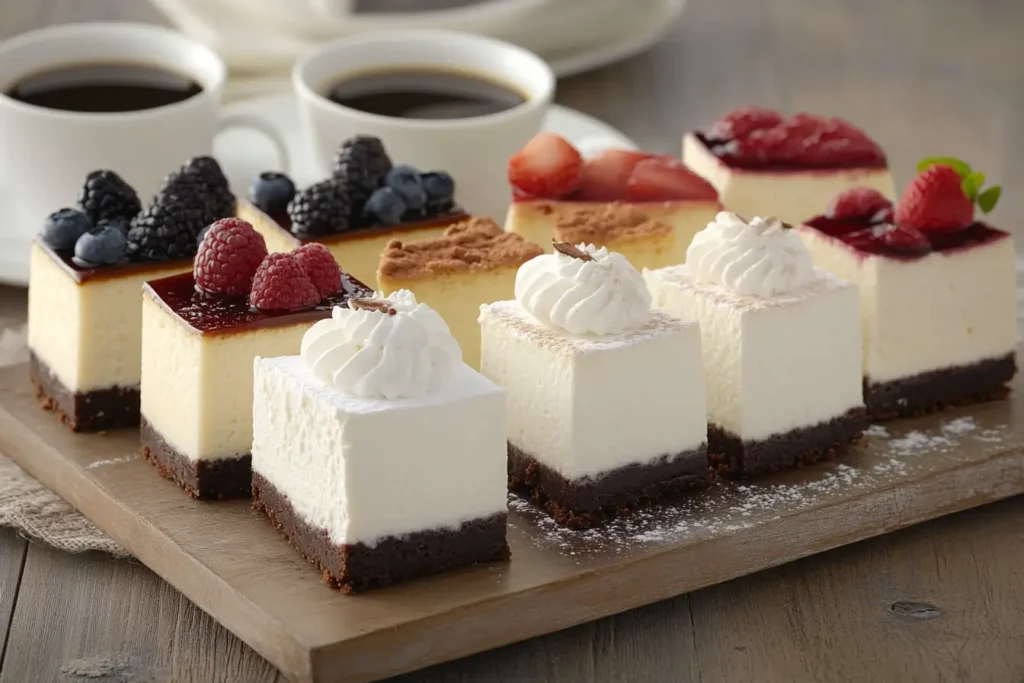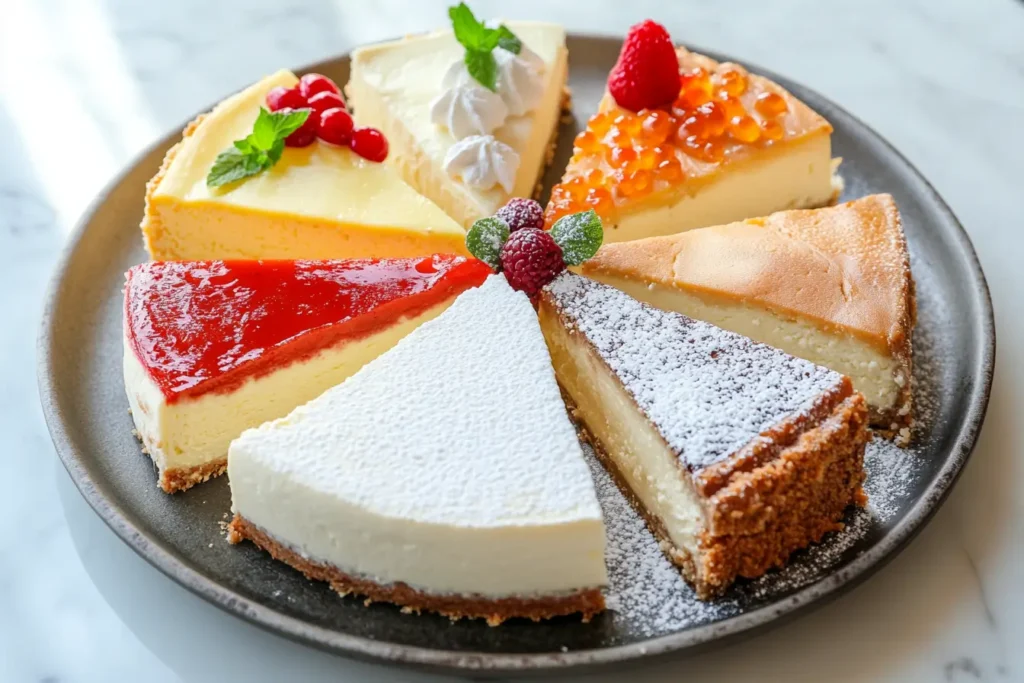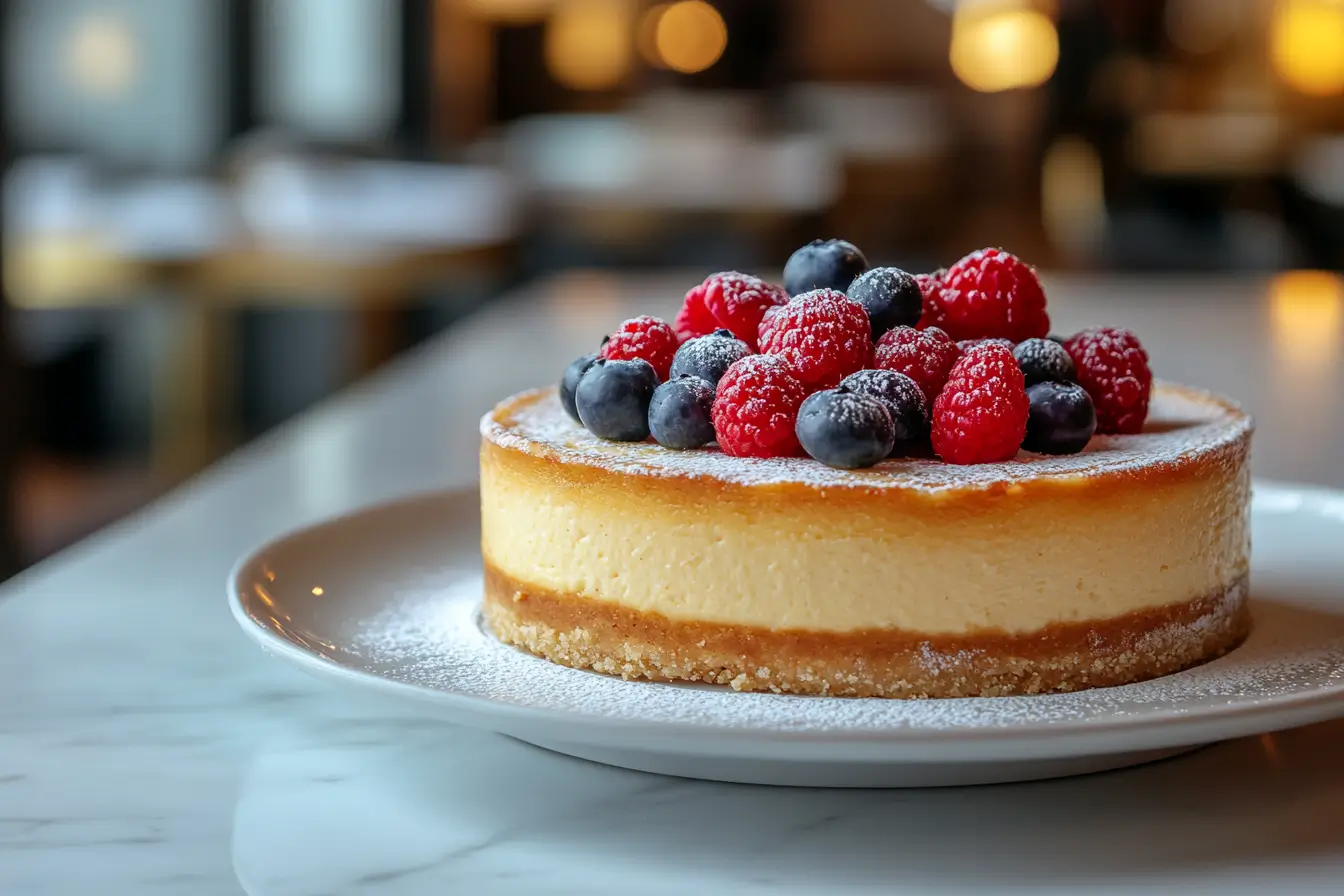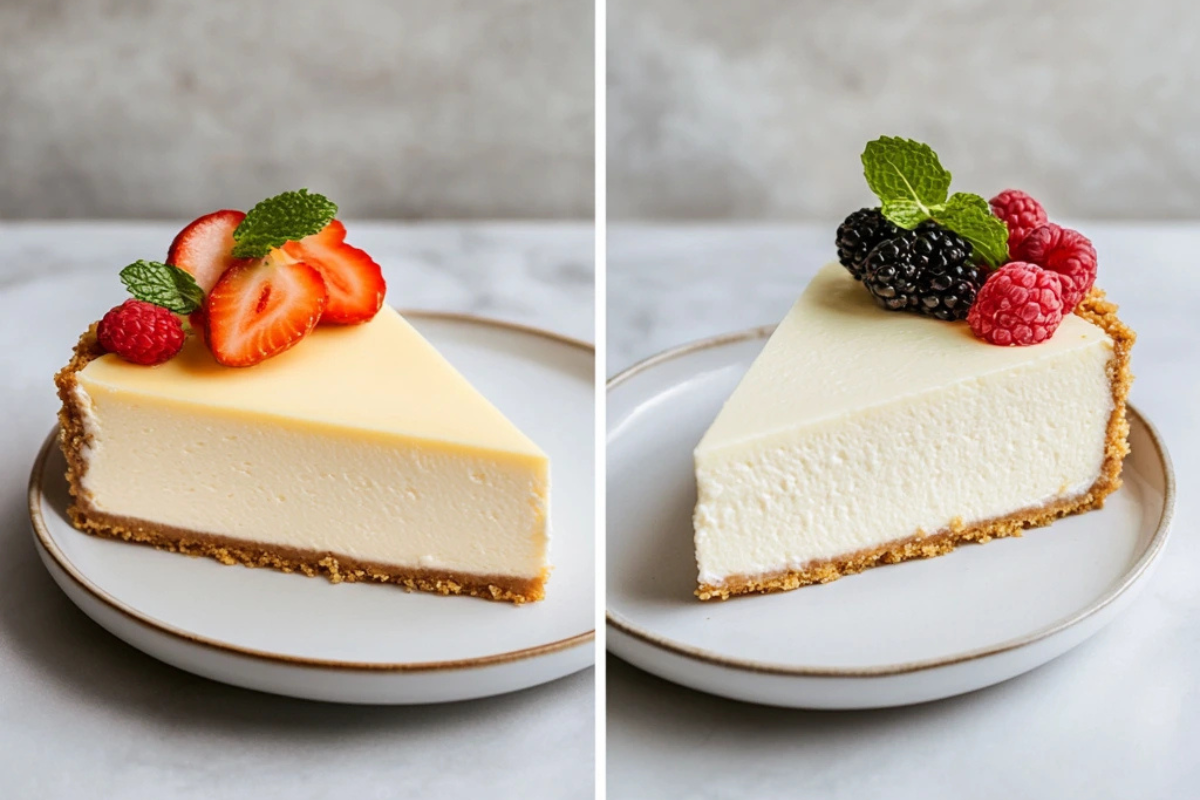What’s the Difference Between Cheesecake and French Style Cheesecake
When you hear “cheesecake,” you probably imagine a slice of something smooth, rich, and creamy. Maybe it’s nestled in a golden graham cracker crust, maybe it’s topped with a glossy fruit compote—but whatever the details, it’s likely a dense, luscious bite of pure indulgence.
But not all cheesecakes are created equal. In fact, there are several styles, and one of the most interesting distinctions is between classic cheesecake and French-style cheesecake. You may not have realized it, but the version you know and love might be quite different from what you’d get in a French patisserie.
So, What’s the Difference Between Cheesecake and French Style Cheesecake Let’s break it down.
Classic Cheesecake: A Creamy, Dreamy Dessert
Cheesecake is a beloved dessert known for its smooth and rich filling. In the United States, the most familiar version is made by blending cream cheese, sugar, eggs, and either heavy cream or sour cream. This mixture is then baked until it becomes velvety-soft. The goal is to create a treat that tastes both creamy and slightly tangy.check out our internal guide here:
Is Sour Cream or Heavy Cream Better for Cheesecake?
New York Cheesecake: The Ultimate Indulgence
New York cheesecake is like the “extra” version of classic cheesecake. It has a denser, thicker texture because it uses more cream cheese than usual—sometimes with just a little sour cream for extra flavor. It’s usually baked at a lower temperature for a longer time, often with a water bath. The water bath helps keep the temperature steady so the cheesecake doesn’t crack on top.
The Classic Graham Cracker Crust
Almost all American-style cheesecakes feature a crust made from crushed graham crackers mixed with melted butter (and sometimes a spoonful of sugar). This crunchy, slightly sweet layer contrasts perfectly with the smooth filling. It’s pressed into the bottom of the pan and sometimes up the sides, then pre-baked to set it before adding the filling.
Many Delicious Variations
- Chocolate Cheesecake: Made by adding cocoa powder or melted chocolate into the batter. It’s richer and more intense in flavor.
- Fruit-Swirl Cheesecake: Swirls of fruit purée (such as strawberry or raspberry) are gently folded into the filling before baking, creating a pretty marbled look.
- No-Bake Cheesecake: Instead of eggs, it uses whipped cream or gelatin to help it set in the fridge. This version is lighter and perfect for warm days.
- Savory Cheesecakes: These are less common but very tasty. They might use goat cheese or ricotta, and instead of sugar, you add herbs or vegetables. They’re often served as appetizers rather than desserts.
Extra Tips for the Perfect Cheesecake
- Room Temperature Ingredients: Let your cream cheese, eggs, and other ingredients warm up a bit before mixing. This helps you get a smoother batter.
- Avoid Overmixing: Too much mixing can trap air bubbles and make your cheesecake rise, then sink or crack. Mix just until everything is combined.
- Gentle Cooling: After baking, turn off the oven and let the cheesecake cool inside with the door slightly open. A slow cool-down helps prevent cracks.
A Look Across the Atlantic
Cheesecake changes in different parts of the world. In many European countries, people might use a fresh cheese called “quark” or a ricotta-like cheese. The flavors and textures can vary a lot, creating new and exciting cheesecake experiences. So the question is: What happens when you take cheesecake across the Atlantic? You’ll discover that each region has its own spin on this creamy delight! Healthiest Cheese (Healthline).
French-Style Cheesecake: Light, Airy, and Elegant
French-style cheesecake is a whole different experience. While American cheesecake is thick and indulgent, French cheesecake is light, delicate, and more refined.
The biggest difference? The cheese. Instead of cream cheese, French-style cheesecake is typically made with fromage blanc or Neufchâtel, both of which have a softer, tangier, and more yogurt-like flavor than the dense Philadelphia-style blocks used in American cheesecakes. Some versions use a mix of ricotta and mascarpone for an even lighter texture.
French cheesecake often leans into a mousse-like consistency, thanks to the addition of whipped egg whites or even gelatin. This makes it far airier than the dense, rich American variety. Some versions are completely crustless, letting the soft, almost soufflé-like texture shine on its own.
And then there’s Tarte au Fromage Blanc, a cousin of cheesecake popular in Alsace and Lorraine. This version often sits on a thin, pastry-style crust rather than a crumbly graham cracker base, making it feel more like a refined tart than a thick slice of cake.
French cheesecakes also tend to be more subtly sweet. Instead of being loaded with sugar, they’re often flavored with hints of vanilla, lemon zest, or a touch of liqueur. They can be served plain, dusted with powdered sugar, or topped with fresh berries for a simple, elegant finish.

So, Which One’s Better?
Honestly, it depends on what you’re craving.
If you want something dense, creamy, and unapologetically indulgent, go for classic cheesecake—the kind you’ll find in New York delis or on a Cheesecake Factory menu. It’s rich, satisfying, and perfect for a truly decadent dessert.
If you’re after something lighter, airier, and a little more refined, French-style cheesecake is your best bet. It’s more delicate, less sweet, and often feels more like a special-occasion dessert than a guilty pleasure.
Either way, both styles have their merits—and whichever one you choose, you’re in for a delicious treat.

The Takeaway
Cheesecake comes in many forms, and the difference between traditional and French-style cheesecake is all about texture, ingredients, and approach.
- Classic cheesecake: Dense, creamy, often with a graham cracker crust, made with cream cheese.
- French-style cheesecake: Light, airy, often crustless or with a pastry base, made with fromage blanc or Neufchâtel.
Both are delicious, both have their fans, and both deserve a spot on your dessert plate.
Now the real question is—do you go for a thick, creamy slice of New York cheesecake or an ethereal, soufflé-like French cheesecake? Tough call, but either way, you’re winning.

Elegant French-Style Cheesecake
Ingredients
- 1½ cups graham cracker crumbs or crushed butter cookies for crust
- 5 tablespoons unsalted butter melted, for crust
- 2 tablespoons granulated sugar for crust
- 24 oz cream cheese softened
- 1 cup granulated sugar for filling
- 1 cup crème fraîche or sour cream for filling
- 3 large eggs room temperature
- 2 teaspoons vanilla extract
- 1 zest of lemon optional, for extra freshness
- fresh berries blueberries, raspberries, strawberries, for topping
- powdered sugar for dusting
Instructions
- Preheat the oven to 325°F (160°C). Grease a 9-inch (23cm) springform pan.
- Mix graham cracker crumbs, melted butter, and sugar in a bowl. Press into the bottom of the prepared pan to form the crust.
- Bake the crust for 8–10 minutes until set, then allow to cool.
- In a large bowl, beat the cream cheese and sugar together until smooth and creamy.
- Blend in crème fraîche, vanilla extract, and lemon zest if using.
- Add the eggs one at a time, beating just until incorporated after each addition.
- Pour the filling over the cooled crust and smooth the top.
- Bake for 45–50 minutes until the edges are set but the center still jiggles slightly.
- Turn off the oven, crack the oven door open, and let the cheesecake cool inside for 1 hour.
- After cooling, refrigerate the cheesecake for at least 4 hours or overnight.
- Before serving, top the cheesecake with fresh berries and a dusting of powdered sugar.
Notes

